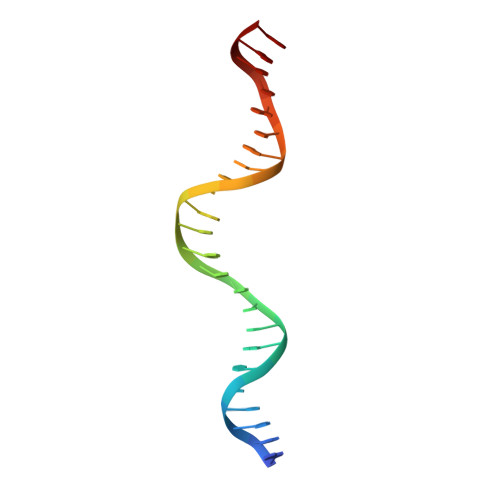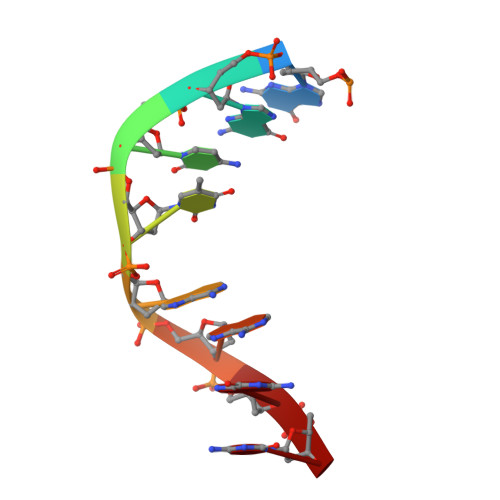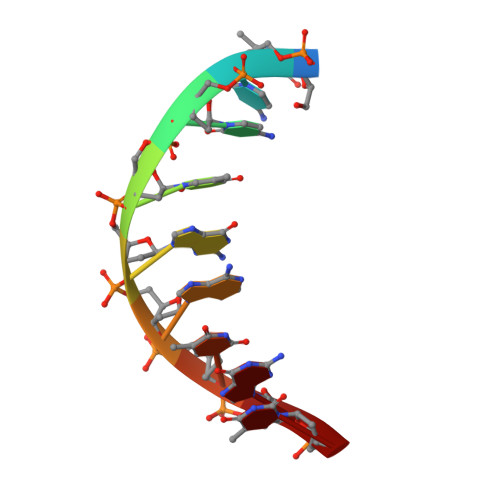Highly Symmetric, Self-Assembling 3D DNA Crystals with Cubic and Trigonal Lattices.
Lu, B., Vecchioni, S., Ohayon, Y.P., Woloszyn, K., Markus, T., Mao, C., Seeman, N.C., Canary, J.W., Sha, R.(2023) Small 19: e2205830-e2205830
- PubMed: 36408817
- DOI: https://doi.org/10.1002/smll.202205830
- Primary Citation of Related Structures:
8D31, 8DAP - PubMed Abstract:
The rational design of nanoscopic DNA tiles has yielded highly ordered crystalline matter in 2D and 3D. The most well-studied 3D tile is the DNA tensegrity triangle, which is known to self-assemble into macroscopic crystals. However, contemporary rational design parameters for 3D DNA crystals nearly universally invoke integer numbers of DNA helical turns and Watson-Crick (WC) base pairs. In this study, 24-bp edges are substituted into a previously 21-bp (two helical turns of DNA) tensegrity triangle motif to explore whether such unconventional motif can self-assemble into 3D crystals. The use of noncanonical base pairs in the sticky ends results in a cubic arrangement of tensegrity triangles with exceedingly high symmetry, assembling a lattice from winding helical axes and diamond-like tessellation patterns. Reverting this motif to sticky ends with Watson-Crick pairs results in a trigonal hexagonal arrangement, replicating this diamond arrangement in a hexagonal context. These results showcase that the authors can generate unexpected, highly complex, pathways for materials design by testing modifications to 3D tiles without prior knowledge of the ensuing symmetry. This study expands the rational design toolbox for DNA nanotechnology; and it further illustrates the existence of yet-unexplored arrangements of crystalline soft matter.
Organizational Affiliation:
Department of Chemistry, New York University, New York, NY, 10003, USA.



















